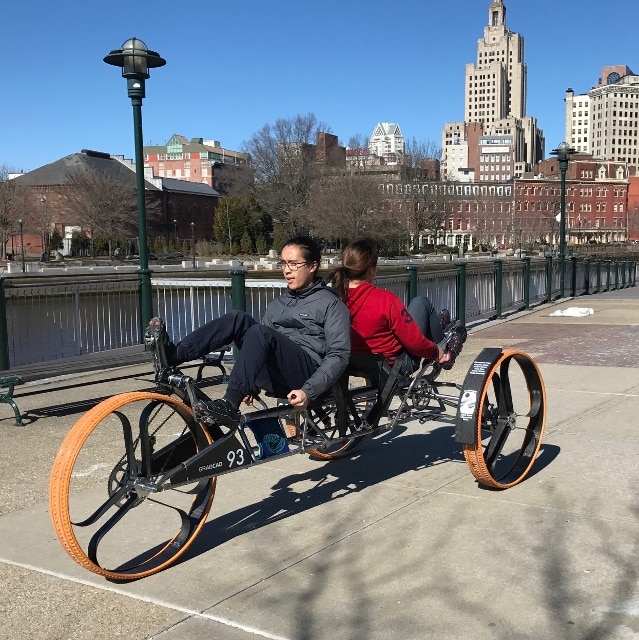Apr 3, 2017
Two IDSA student members from the Rhode Island School of Design (RISD), Robert Wang, S/IDSA, and Max Riece, S/IDSA, were part of a team of about a dozen RISD students that won second place for a second year in a row in the Human Exploration Rover Challenge at NASA’s US Space and Rocket Center in Huntsville, AL.
The team, advised by RISD senior critic and NASA coordinator Michael Lye, designed a $12,000 rover—a lightweight, human-powered tricycle—and tested it on the streets of Providence before the competition. As for Wang, he took an indirect route to industrial design. “I chose ID because the engineering degree I was pursuing at the time was too abstract,” he tells IDSA. “I needed some tactile engagement which RISD offered through the iterative and hands-on framework of its ID program. Of course, this was almost three years ago and I’ve learned since that design is more than just making physical or digital objects.” Wang says he thinks the essence of design is really the ability to create a whole experience and make a human connection, regardless of medium or application.
In the challenge, high school and college student teams from around the world raced rovers on a nearly three-quarter-mile course covered with 17 obstacles that simulated terrain found on Mars, as well as on other planets, moons and asteroids. This wasn’t Wang’s first space rodeo. “The course is really tough,” he told WJAR-TV, the NBC television affiliate news station in Providence. “There are certain obstacles that no team ever got over last year.” In 2016, RISD came in second place in the college divsion, and took home the Featherweight Award. This is RISD’s seventh year in the competition.
All the contraptions have to be able to collapse into a five-foot cube. And except for wheel hubs, bearings and bushings—every other part like the carbon fiber leaf springs and the independent suspension system must be handmade and machined by students.
“To actually see this thing complete and finish the race is just a huge reward in itself,” Wang says.
